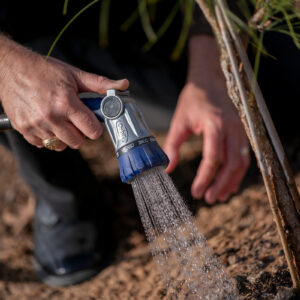Insecticides are chemicals that kill insects. They are powerful tools for controlling insect pests of sorghum. Their major advantage is that they are the only practical control for insect pests at or approaching economically damaging abundance levels. Insecticides kill rapidly and are easy to apply. Key disadvantages of insecticides are cost and broad toxicity. They adversely affect nontarget organisms in the crop and nearby areas. From a sorghum insect pest management standpoint, cost and killing natural enemies are of most concern. Human health and environmental problems associated with using insecticides increase the importance of preventive management methods and justified need for insecticide application.
Insecticides should be used in the proper amounts and only when necessary to prevent economic loss. Cost of totally eliminating insect pests with insecticides can exceed benefits. Insecticides should be applied only when insect pest abundance is increasing and expected to exceed the economic injury level if not suppressed. The economic injury level is the insect pest abundance or amount of damage that causes economic crop loss greater than the cost of controlling the pest. An economic threshold level is an insect pest abundance or damage level before the economic injury level is reached, and is when control measures should be applied. Costs for insecticide and application, prevailing crop market price, and expected yield all must be considered when deciding to use an insecticide. Insect pest abundance, age, and duration of attack, as well as stage and condition of the plants attacked, also must be considered.
Insecticides can be timed or used in ways to preserve naturally occurring predators and parasites of sorghum insect pests. For example, many predators and parasites will be spared if extremely low rates of insecticide are used when greenbug abundance reaches the economic threshold. This technique can be used, however, only where greenbugs are highly susceptible to insecticides. Spider mites are resistant to insecticides, and insecticide applications can destroy natural enemies and disperse spider mites on infested plants, releasing the reproductive inhibitory effect of crowded colonies that enable spider mites to rapidly increase in abundance.
Sorghum insect pests most affected by natural enemies are greenbug, yellow sugarcane aphid, corn earworm, fall armyworm, sorghum webworm, and Banks grass mite. Predators affect the abundance and rate of increase of greenbug, especially during early season, and often prevent economic damage. This is true particularly when greenbug-resistant hybrids are used. Parasites often terminate greenbug infestations late in the season. Predators suppress the abundance of corn earworm and fall armyworm that infest sorghum panicles. The sorghum midge is attacked by several parasites, but their effect is minimal. Several pathogens, mostly fungi, infect insect pests. Chinch bug, corn earworm, and fall armyworm are insect pests most affected by naturally occurring pathogens.




